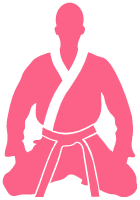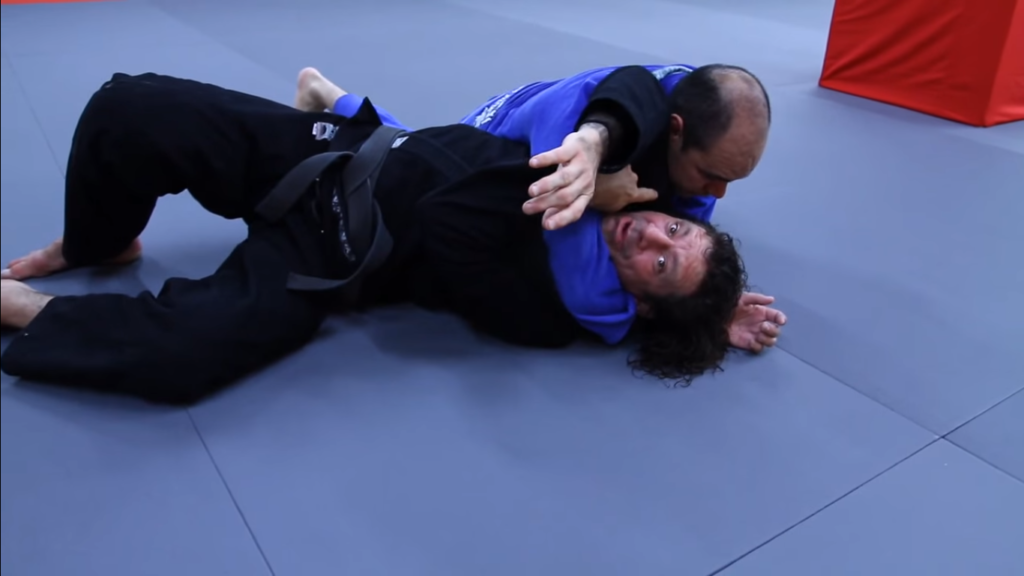The Head and Arm Choke, also known as the Kata Gatame or the Arm Triangle, is a submission hold commonly used in Brazilian Jiu-Jitsu and other grappling arts. It’s a highly effective technique that can catch your opponent off-guard and lead to a quick submission. However, like any other submission hold, it can also be defended against with the right knowledge and techniques. In this article, we’ll explore the Head and Arm Choke, how it’s executed, and how to defend against it.
Execution of the Head and Arm Choke
To execute the Head and Arm Choke, the attacker must first establish a dominant position on their opponent, such as the mount or side control. From there, the attacker will use their arm to trap their opponent’s head and arm, creating a triangle with their arms. The attacker’s shoulder will be pressed against the side of their opponent’s neck, while their bicep will be pressing against their opponent’s carotid artery. The attacker will then use their other arm to apply pressure on the back of their opponent’s head, pushing it towards the trapped arm and further tightening the choke.
Defending Against the Head and Arm Choke
The Head and Arm Choke is a highly effective submission hold, but it can be defended against with the right techniques. Here are some key principles to keep in mind when defending against the Head and Arm Choke:
A. Protect Your Neck: The first step in defending against the Head and Arm Choke is to protect your neck. This can be done by keeping your chin tucked to your chest and by placing your hand on the side of your neck to block your opponent’s choking arm.
B. Create Space: Once you’ve protected your neck, your next step is to create space between you and your opponent. This can be done by using your legs to push your opponent away, or by bridging and rolling to one side.
C. Rotate Your Body: Another effective defense against the Head and Arm Choke is to rotate your body in the direction of your trapped arm. This will help to alleviate the pressure on your neck and make it more difficult for your opponent to finish the submission.
D. Use Your Free Arm: If your opponent has trapped your arm, use your free arm to push on their head or arm, creating space and making it more difficult for them to maintain the choke.
Escaping the Head and Arm Choke
In addition to the defensive techniques outlined above, there are also several ways to escape the Head and Arm Choke once you’ve been caught in the hold. Here are some effective escape techniques:
A. Shoulder Roll: One common escape technique is the shoulder roll. To perform this technique, bridge and roll your body to one side while tucking your chin to your chest. This will help to create space and alleviate the pressure on your neck.
B. Push Your Opponent’s Head: Another effective escape technique is to push on your opponent’s head with your free hand while rotating your body in the direction of your trapped arm. This will help to create space and alleviate the pressure on your neck.
C. Straighten Your Trapped Arm: If your arm is trapped, try to straighten it out as much as possible. This will help to alleviate the pressure on your neck and make it more difficult for your opponent to finish the submission.
D. Counter Attack: If your opponent is using the Head and Arm Choke from the mount position, one effective counter attack is to bridge and roll your opponent, reversing their position and putting them in your guard.
Common Mistakes to Avoid
When defending against the Head and Arm Choke, there are some common mistakes that you should try to avoid:
-
Not establishing an effective frame: When your opponent gets into position for the Head and Arm Choke, it’s important to immediately establish a strong frame with your arms and shoulders. Failing to do so can leave you vulnerable to being flattened out and choked.
-
Turning away from your opponent: Turning away from your opponent may feel like a natural response to the pressure of the choke, but it only makes it easier for your opponent to secure the choke. Instead, focus on turning into your opponent and creating space to relieve the pressure.
-
Letting your opponent get too deep: If your opponent is able to secure a deep grip on your head and arm, it will be much more difficult to escape the choke. Try to prevent your opponent from getting a deep grip by maintaining your frame and keeping your head up.
-
Waiting too long to escape: The longer you wait to escape the Head and Arm Choke, the more difficult it becomes. As soon as you feel your opponent beginning to secure the choke, start working on your escape.
-
Trying to force your way out: Trying to muscle your way out of the Head and Arm Choke is not effective and can actually make the choke tighter. Instead, focus on using technique and leverage to escape.
-
Neglecting to practice defense: It’s important to practice defense against the Head and Arm Choke regularly so that you are prepared to defend against it in a live grappling situation. Don’t assume that you’ll be able to figure out the defense on the spot – make it a part of your regular training routine.
Key Principles of Escaping the Head and Arm Choke
When defending against the head and arm choke, there are several key principles to keep in mind. First, it’s important to keep your elbows tight to your body to prevent your opponent from locking in the choke. Additionally, you should focus on creating space between your neck and your opponent’s arm to relieve pressure on your neck. This can be done by turning your head to the side, or by pushing your opponent’s arm away from your neck. It’s also important to maintain a strong base and not allow your opponent to sweep you. Finally, it’s crucial to remain calm and composed, as panicking can lead to mistakes and make it easier for your opponent to secure the choke.
Staying Alive
When caught in a head and arm choke, it’s crucial to stay calm and avoid panicking. Try to stay in a defensive posture by keeping your elbows tight to your body and your chin tucked. Use your free hand to grab onto your opponent’s wrist or sleeve to prevent them from fully locking in the choke. Focus on breathing deeply and exhaling forcefully to create space and alleviate the pressure on your neck. If your opponent is able to fully lock in the choke, you can still try to defend by creating space with your legs and pushing your hips forward to disrupt their base. However, the key to staying alive in the head and arm choke is to prevent your opponent from fully locking it in, so focus on maintaining a strong defensive posture and using your free hand to control their grip.
The Head and Arm Choke is a powerful submission technique that can catch even experienced grapplers off guard. However, with proper defense and technique, it is possible to escape the choke and avoid being submitted. Remember to establish a strong frame, turn into your opponent, prevent a deep grip, and start working on your escape early. By avoiding common mistakes and practicing your defense regularly, you can become proficient at defending against the Head and Arm Choke and improve your overall grappling game.
Hey there! Just a heads up that some of the links in this post are affiliate links, which means that if you click on them and make a purchase, I may earn a commission. But don’t worry, it won’t cost you anything extra – in fact, you might even get a sweet deal! Plus, every purchase made through one of these links helps support my blog and keep the content coming. So, if you do decide to make a purchase, thank you so much for your support – it means the world to me!
All the best,
Will








